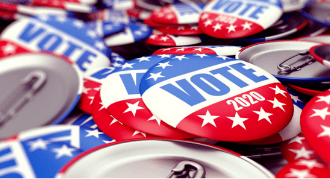
Help Kids (and Yourself) Understand Different Kinds of Elections in the U.S.
Shelby KretzShare
How to explain election types and why they’re all critical?
By Gabby Cushman
The month of August marks the final handful of primary elections throughout the United States, leading up to the midterm elections occurring this November. Voting is essential now more than ever, and it’s never too early for your young ones to begin learning about how elections work in the United States. However, it can be a confusing conversation due to how many election types we have. Your child may be confused as to why you’re voting again in November after you already told them about voting this summer. To help avoid that confusion, here is a quick and straightforward guide going over the basics of the different types of elections.
Primary vs. General Elections
For every election year, there is a primary and a general election. These serve different purposes and occur during various points in the year.
Primary Elections
Primary elections are the lead-up to general elections in November. Primaries allow voters to choose from a pool of candidates to decide who will represent their political party for different political races in the general election. Due to this, most states require you to only vote for candidates in the political party you’re registered as, usually either Republican or Democrat. If you are registered to vote as a Democrat, for example, your votes in the primaries would help you choose which Democratic candidate you want to run against other party candidates for their political race in the general election. Primaries can take place on various dates throughout the year, depending on your state.
General Elections
General elections are the big event. This is where one candidate from each party is up against each other for a handful of different political positions. The types of appointments available depend on whether it’s a federal, state, or local election (which we’ll go over next). Examples include senators, representatives, governors, mayors, and even the president! General elections are always held on the first Tuesday (after the first Monday) in November. In some states, this election day is considered a holiday, so all students and workers have availability in their schedules to go vote. This year, our general election is also a midterm one, which means it’s in the middle of our current president’s four-year term. The focus during midterms is usually to see what senators and house representatives get elected and whether that causes a particular political party to “take control of” (or have a majority in) the U.S. Senate and U.S. House of Representatives.
Federal vs. State vs. Municipal Elections
The different federal, state, and municipal (or local) elections determine what political positions you will be electing candidates for during the primary and general elections. Knowing the distinctions and understanding that each of these elections is as important as the others is critical.
Federal Elections
Federal elections involve voting for candidates who will fill roles that help make decisions that represent and affect our whole country. These positions include the president, vice president, U.S. senators, U.S. representatives, and more. Federal elections happen every two years, except for presidential elections, which occur every four years.
State Elections
State elections consist of voting for candidates who will fill roles that affect the whole state you reside in. They include your state governor, lieutenant governor, state senator, state representative, secretary of state, attorney general, and more. Some states let voters choose state and district judges. State elections will also include ballot initiatives, such as amendments to the state constitution that can enact or change laws within your state. These elections can occur any year and at various times throughout the year.
Municipal/Local Elections
Local elections represent the candidates running for roles that affect your city, township, and county. These include your mayor, city council members, city attorneys, school board members, and sheriffs. Similar to state elections, municipal elections can also include ballot initiatives that will affect your community, such as regulations regarding school districts or local businesses. These can also occur throughout the year.
The differences between these elections can be confusing for adults, let alone children. Many voters can severely underestimate the impact their vote can have in a local election as opposed to a federal election. We want to ensure our next generation of voters grows up with an understanding of all elections and wanting to participate in every one. Voting is another way to advocate for the social justice causes you and your little ones believe in, and there should be no barriers to entry for them.
For more ways to bring social justice to the little ones in your life, sign up for the LJL newsletter here.
